Booking is a process that takes many steps. With traditional systems, phone or email help you exchange messages until you and your customers can agree on time and dates. Moreover, your team deals with constant adjustments, which are ongoing and require even more time and effort.
That’s where booking apps come into play. They automate the processes, making them fast and convenient. Now, if you use or offer an app, it helps streamline workflow and navigation, allowing your team and customers to focus on strategic steps and enjoy a more pleasant experience.
In this article, we discuss how Codica developed a top-notch picnic booking solution to facilitate swift and secure connections between customers and hosts in Kuwait. We discuss how it all started and how the app took shape through strategic steps we followed to implement the client’s idea.
Project background
Kashta is a picnic booking mobile app in Kuwait. The app has rich functionality, robust logic, and sleek design to make the booking process as smooth as possible.
The primary objective of the project was to develop a cross-platform mobile app MVP for booking picnics (Kashta) in Kuwait. As the client aimed to meet local demand and make their product marketable, the solution should encompass the necessary features without being overly complex. That’s why our team focused on the primary functionality necessary for the picnic booking process when the client turned to us for mobile app development services.
We handled the entire project lifecycle. It included project discovery, UI/UX design, end-to-end development, MVP delivery, and further ongoing enhancements.
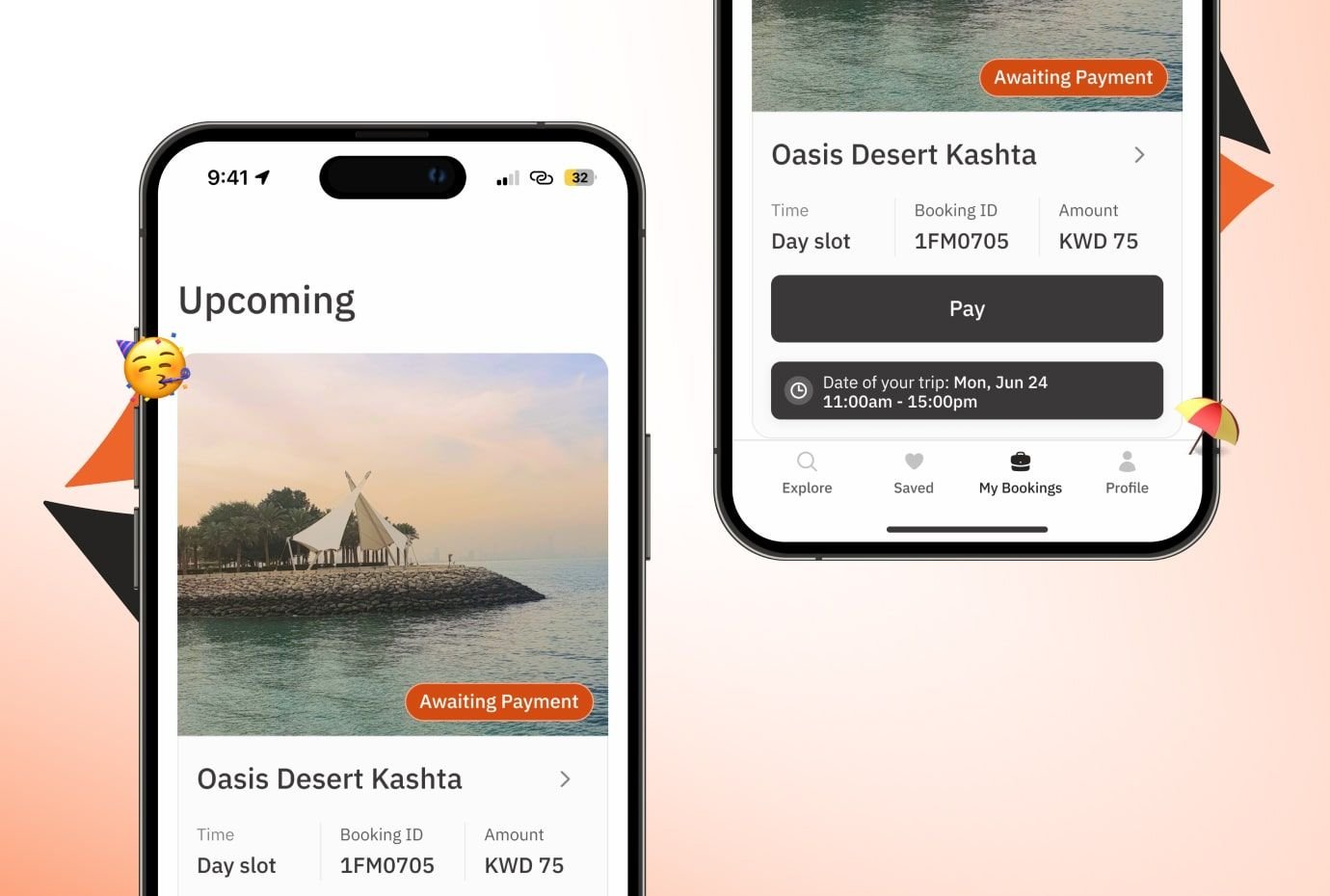
The owner of the Kashta app wanted to optimize picnic booking, a previously tedious manual process. The aim was to remove obstacles, like bookings and adjustments with phone calls, and make the process easy and streamlined.
Thanks to the app, hosts can independently list their spots, and customers can easily discover, book, and pay for picnics, just at the reach of their mobile device.
On the business and tech side, the owner wanted to build a minimum viable product with the perspective of adding more advanced functionality upon user feedback. Therefore, the requirement was to balance the must-have and nice-to-have features, prioritize the necessities, and at the same time leave room for future enhancements.
Key features delivered
Features support the key actions users perform. For Kashta, this means creating functionality for hosts who list spots and customers who make bookings. Here is the list of features that ensure a smooth flow for both sides.
Role-based access for hosts and customers
As a direct connection between customers and hosts is the primary goal of the app, we’ve included all the necessary features for both sides. Thus, hosts can offer various types of property for a picnic and handle all cases of communication with customers. On the other hand, customers have freedom of choice in booking spots and adjusting or cancelling as needed.
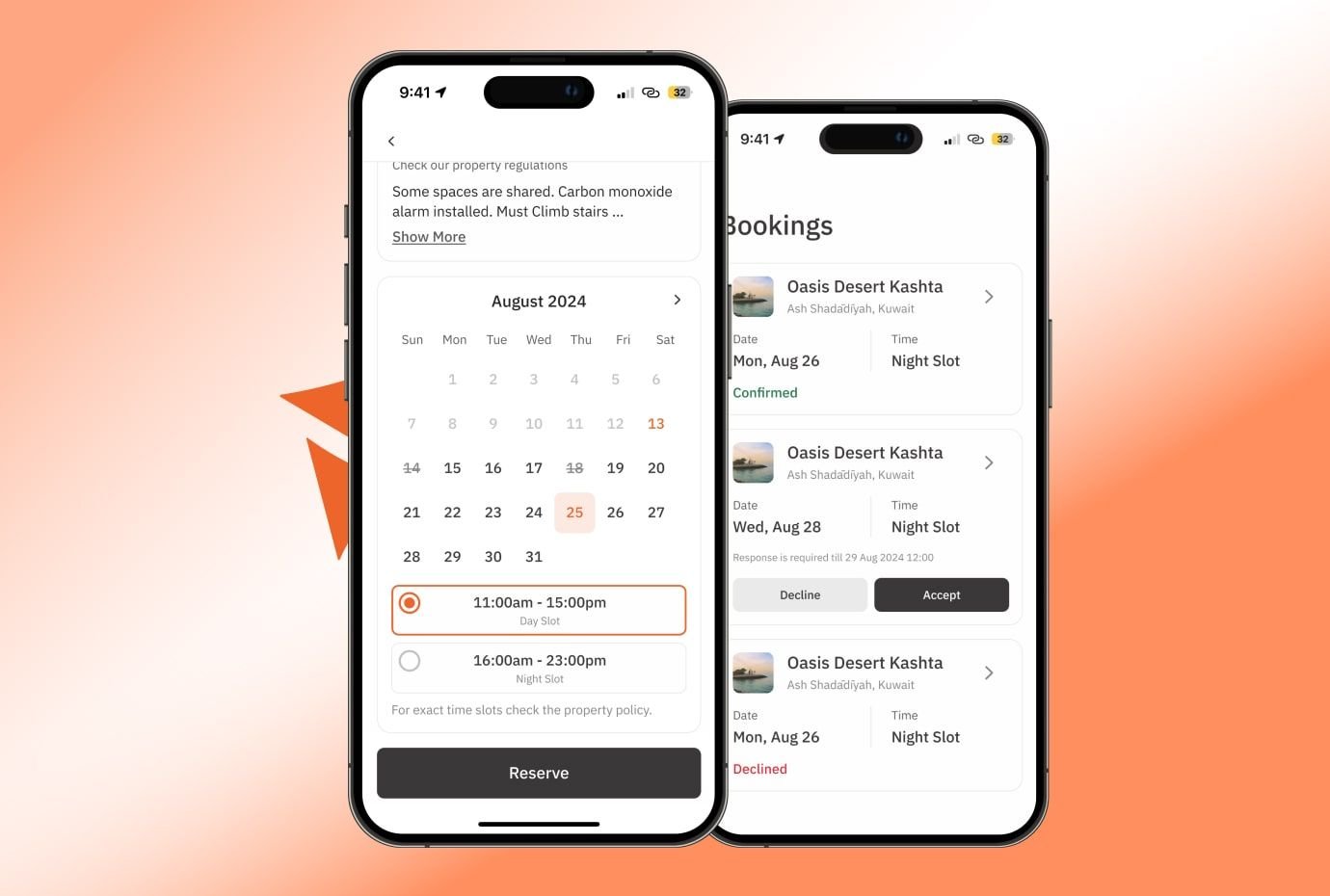
Picnic spot listing and management
The app provides all necessary features to ease listing management for hosts. For example, in their admin panel, they can specify all the necessary information about their spots, such as the type of property, amenities, price per night, number of guests, and more. The panel also allows hosts to upload images to highlight the best sides of their offers.
Real-time availability sync
What makes the Kashta app special is the real-time synchronization of data about the availability of spots and other information. Thus, hosts do not have to contact customers. The latter will see all the necessary updates immediately on their smartphones.
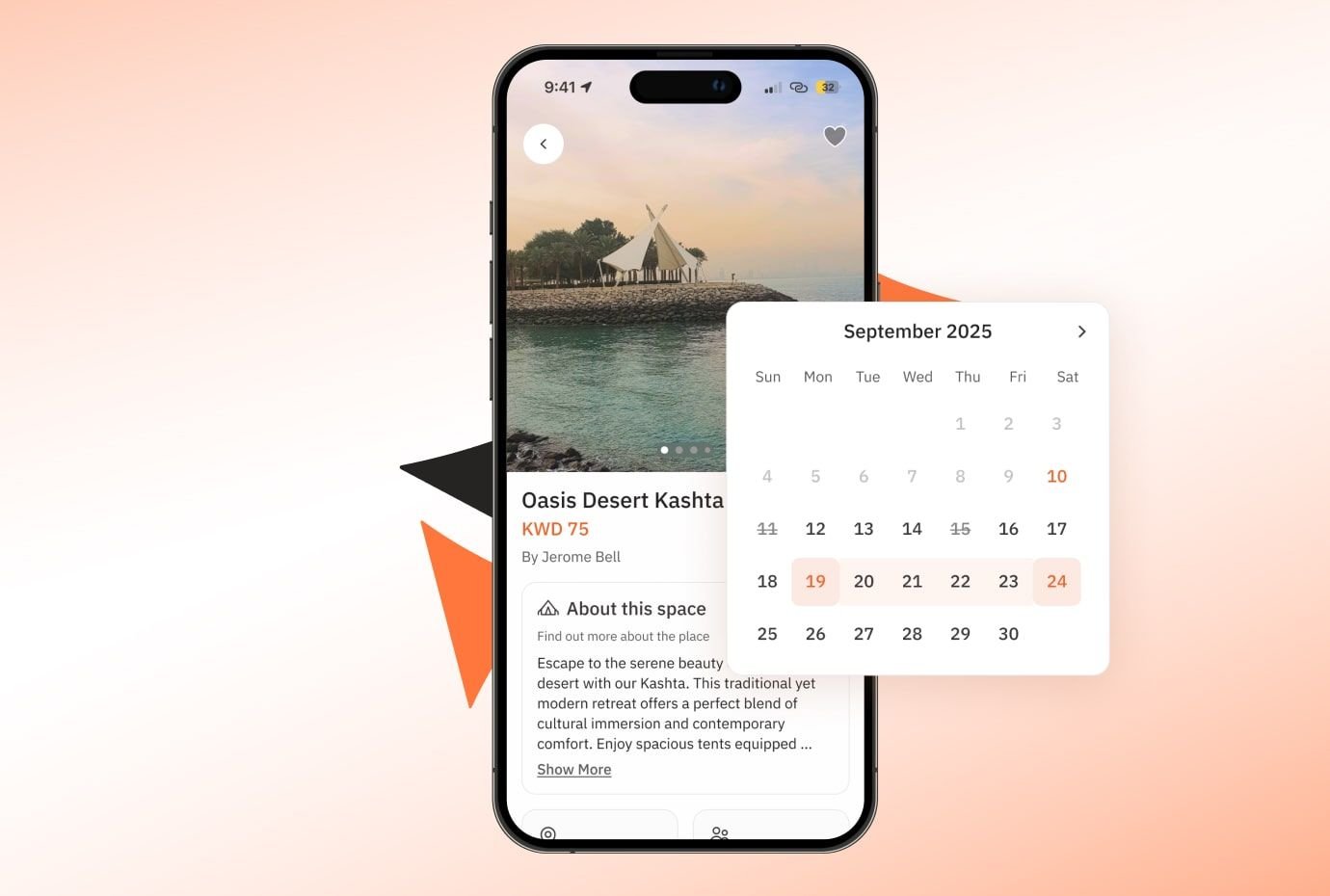
Tap Payments integration
This payment gateway is a feasible solution for the Kashta app, as it meets local needs, has a comprehensive set of payment methods, and is a leading payment solution in the region. Moreover, its functionality allows you to handle cancellations and refunds conveniently and promptly.
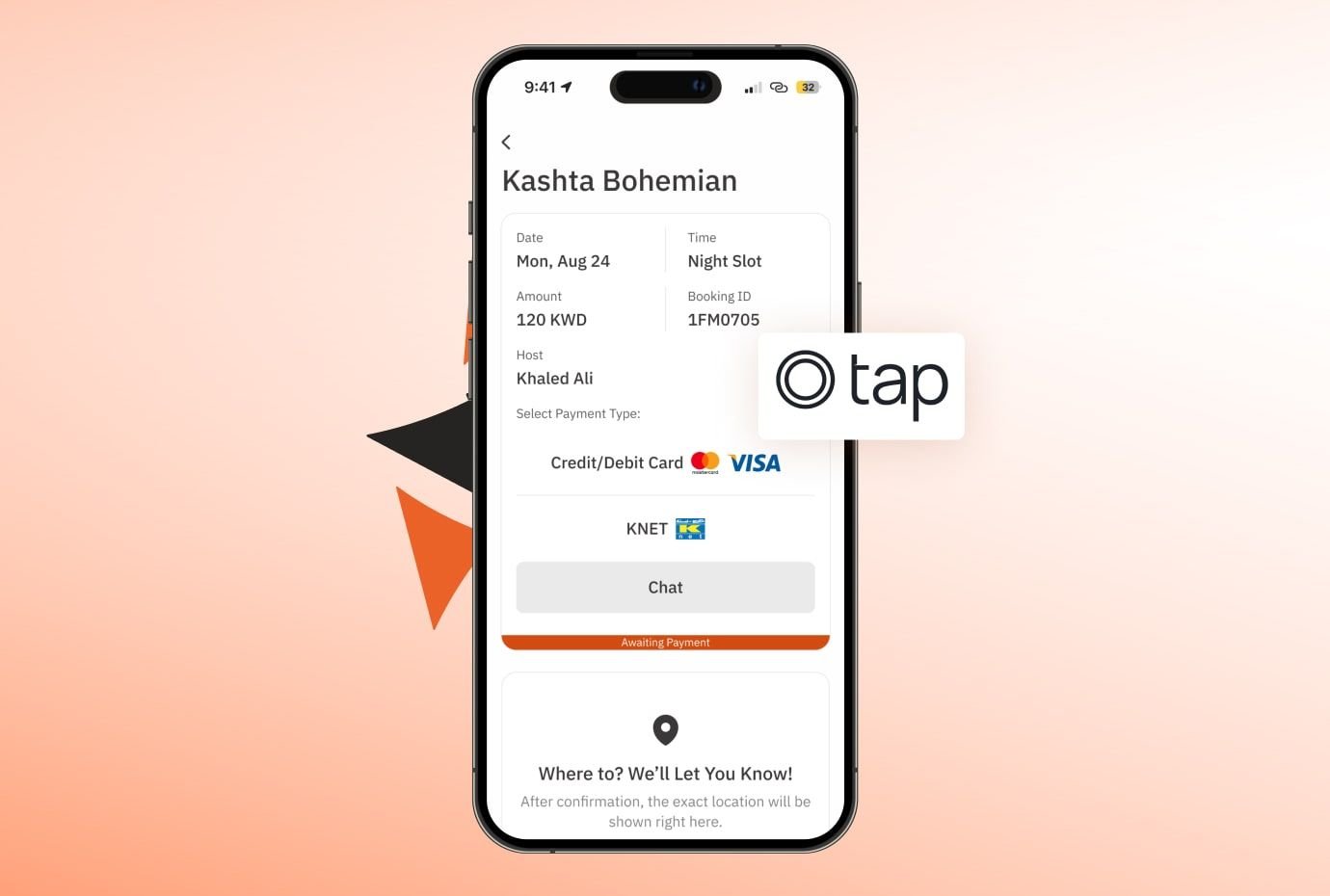
Booking and cancellation logic
We have implemented an intricate process that enables customers to book, reschedule, and cancel their picnics. On the other hand, hosts can adjust their offerings by changing certain parameters. This feature allows customers and hosts to gain greater transparency into their deals and prevent double bookings.
In-app customer-host messaging
What’s special about this feature is that it's built into the app. Thanks to this, we ensured that customers and hosts connect directly to updates as soon as they occur. This way, both sides can make adjustments as needed, which is much more convenient and faster than with traditional messaging. As the app is also presented in Arabic, we introduced left-to-right writing to bring convenience to people who use it in this version.
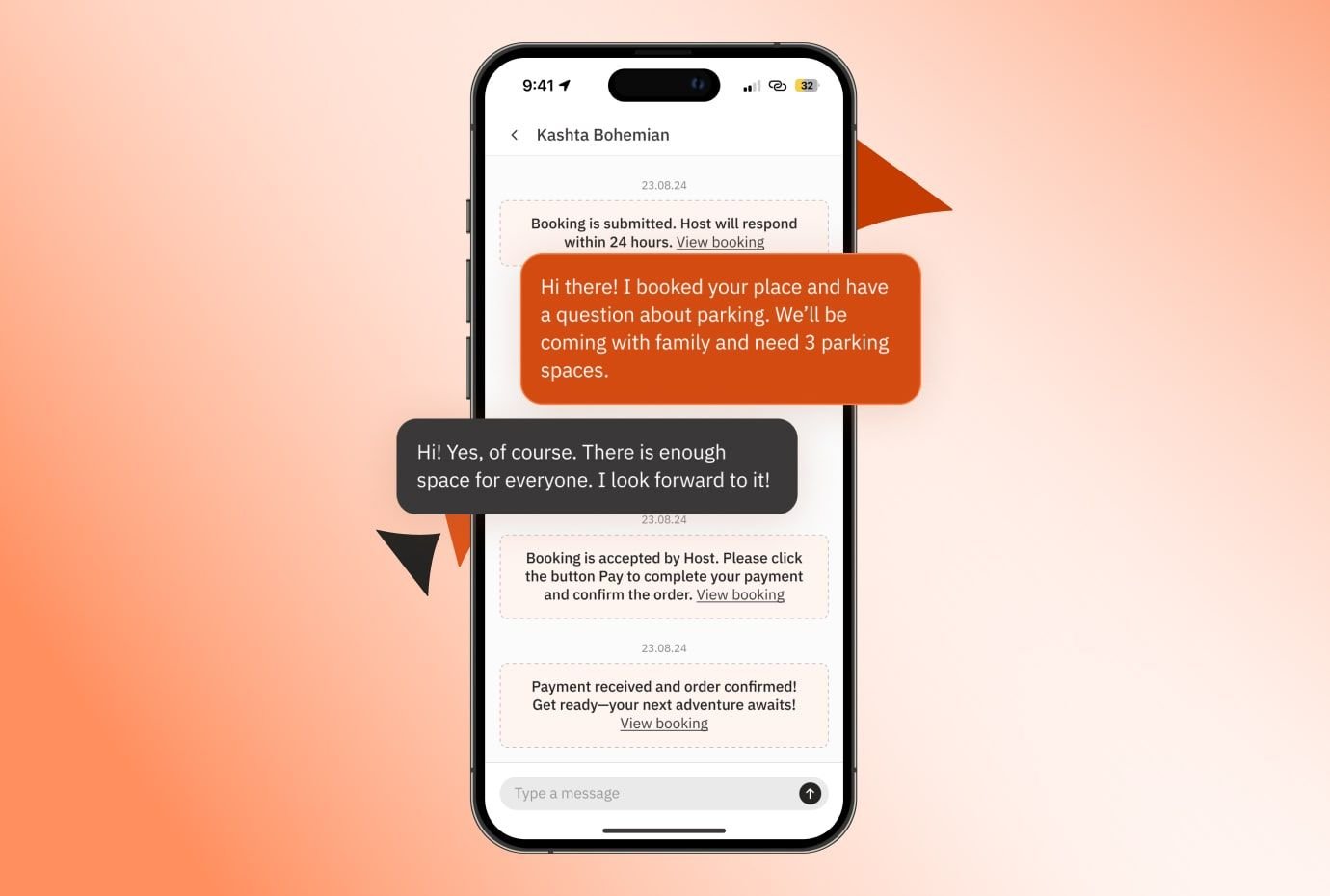
Admin panel for approvals and refund management
A comprehensive admin panel for managing bookings is a crucial component for clear communication with customers. We have added a simple flow that allows hosts to view their spots, manage availability, view bookings, and see the number of orders. Moreover, hosts can specify whether and when the order is refundable. For each order, a host can choose whether to compensate fully or partially in the event of cancellation.
Product discovery sessions
This phase is an indispensable part of the development process. During product discovery sessions, we discuss the business and technical aspects of your project with you. With in-depth research and analysis, we ensure that your solution will be developed in an optimized way and meet your requirements on time and on budget.
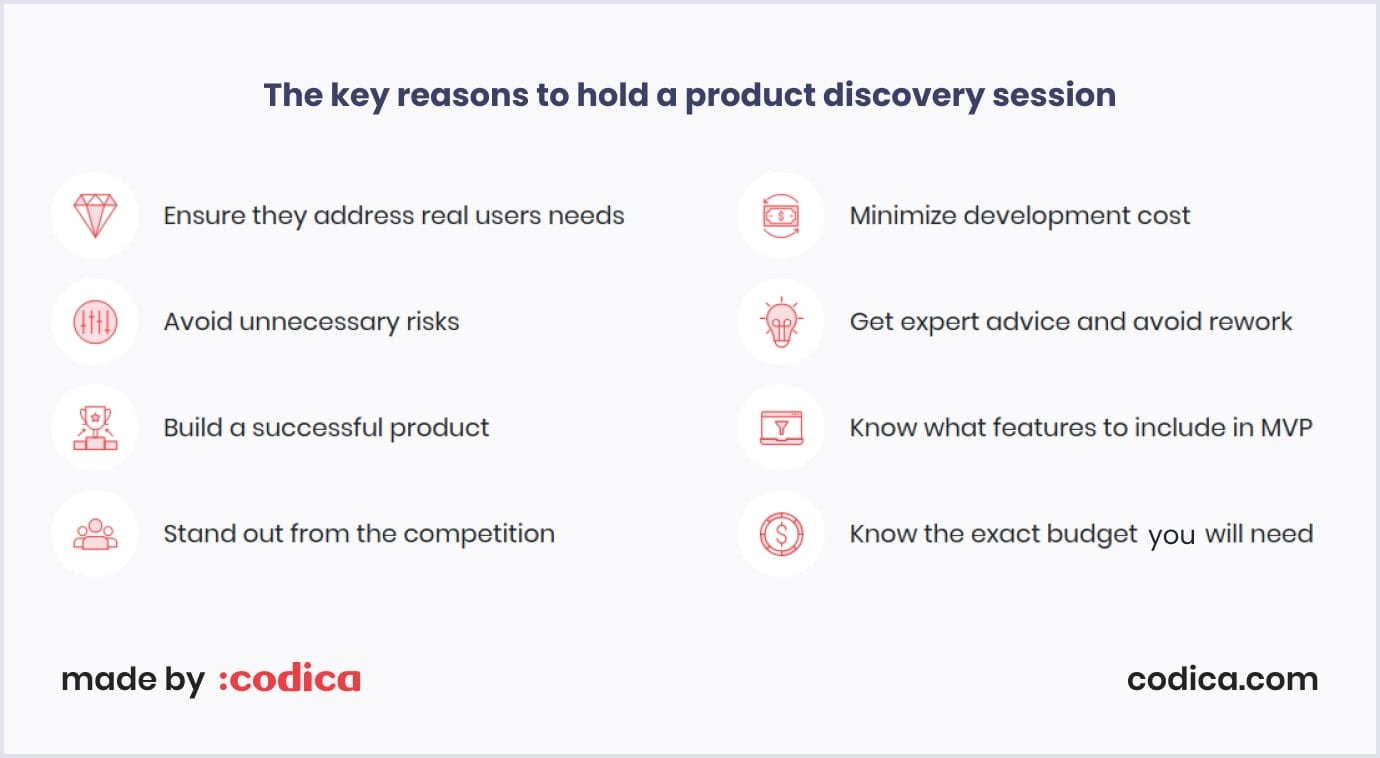
For the Kashta app, the project discovery phase outlined the following.
Business logic and specification
The Kashta native mobile app supports two roles:
- Hosts who can list, manage, and update picnic spot availability;
- Customers who can browse listings, book spots, make payments, and contact hosts.
We implemented robust functionality for each role, so that users feel comfortable in any scenario. Hence, hosts can offer spots and manage customer service efficiently, and customers can be flexible with dates and times. Moreover, in the event of cancellations and the need for refunds, the process is as smooth as possible, considering the secure payment integration we’ve added.
As we have discussed the business logic with the client, the next step was to understand the technical requirements. For the Kashta app, the following points were crucial:
- Build a fast, robust, and secure native mobile app to help hosts and customers connect easily. Hosts should be able to list their property, manage bookings, and offer their services. Meanwhile, customers should be able to book, adjust, and cancel their orders.
- Include only must-have features in Phase 1, and leave enhancements for Phase 2.
- The app should include a built-in messaging system that allows both parties to agree on changes or resolve disputes easily.
- Include right-to-left writing support for the app's use in Arabic. It should look and work perfectly on both iOS and Android.
- Tap Payments was chosen as the app payment gateway because it met local needs and helped manage cancellations and refunds effectively.
What we added to the scope of requirements is development optimization: one codebase for iOS and Android operating systems. This method saved development time for our team and costs for the client.
Prototype development
When developing prototypes for the Kashta app, we focused on highlighting the flow for hosts and customers and multi-language support.
The main purpose of a prototype is to outline how specified features would be implemented in the Kashta app. They do not encompass styles yet, but their simplicity helps you clearly visualize the future solution and its work.
Below is a prototype we’ve created to highlight how bookings appear for customers. The prototype for customers outlines the listing and the option to reserve the spot. Also, customers can view their confirmed, declined, and pending bookings from hosts and change reservations if necessary.
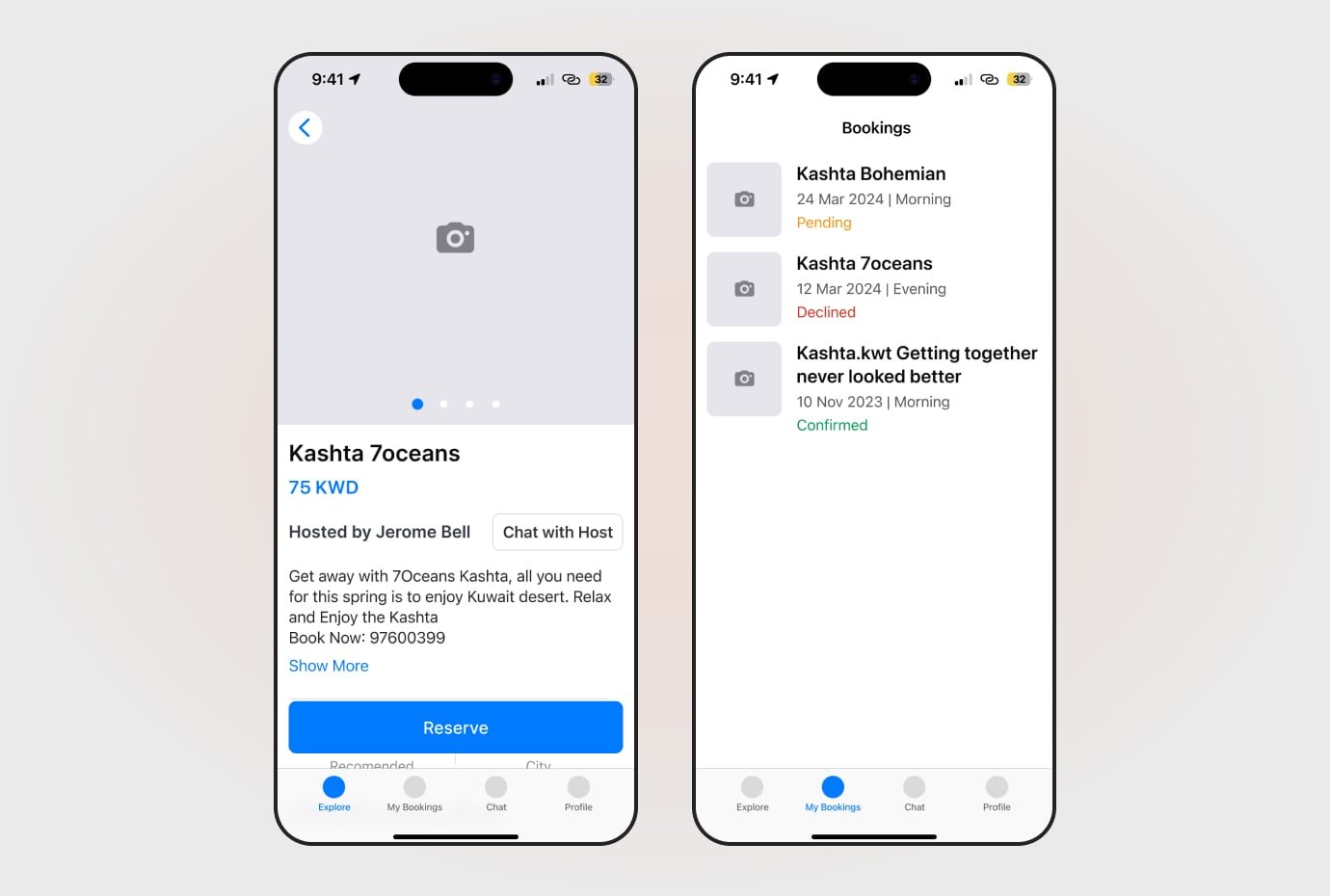
When searching for a spot, customers can choose from various types of spots and view their locations using an integrated map. We’ve designed a combination of a spot list and a map. While the list shows listing cards, the map highlights the listings as circles marked with the relevant listing prices. Easy to view not only how the spot looks, but also where it is located.
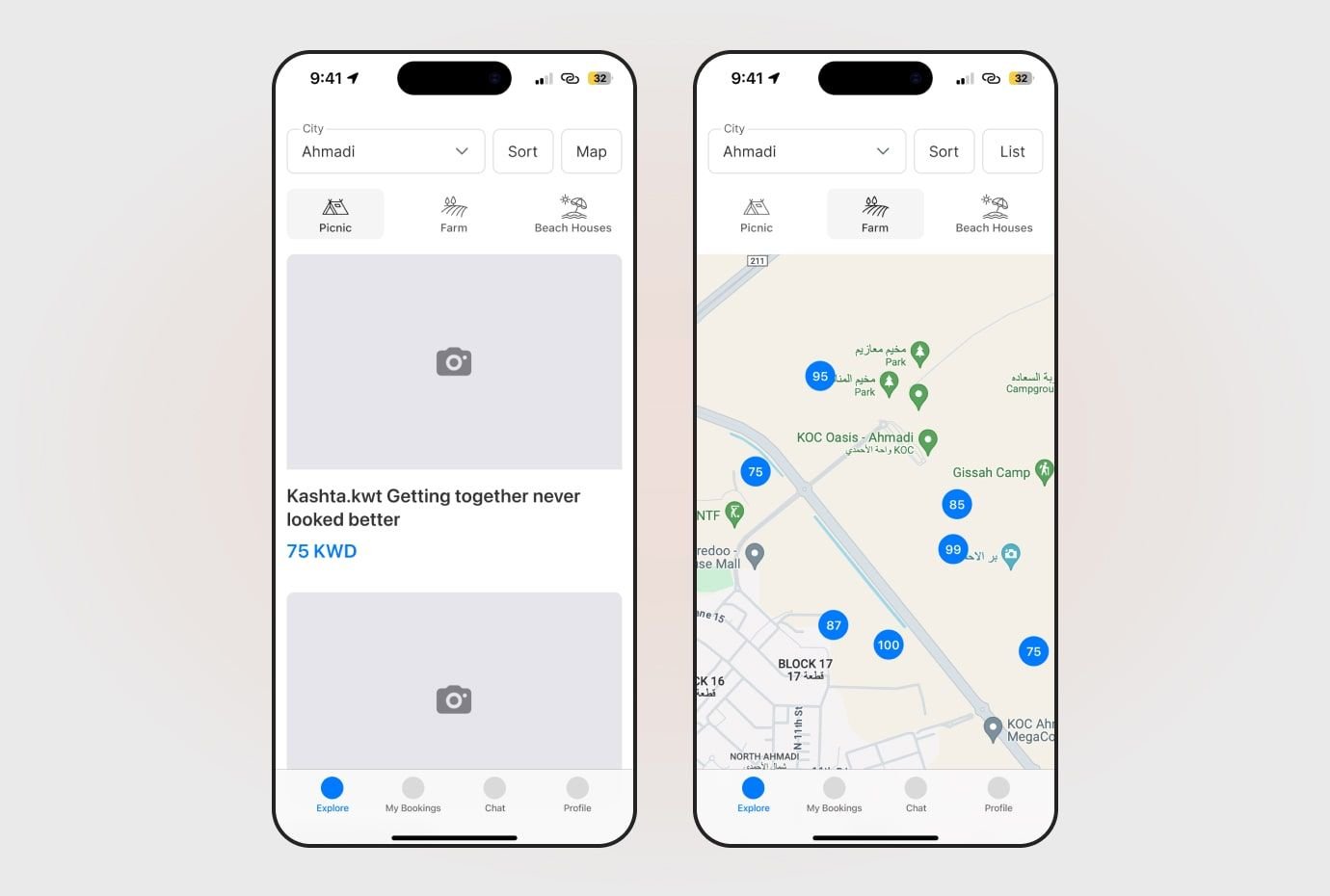
Tech stack selection
Technologies:
- React Native. Since we were optimizing the development process, React Native became an ideal choice. Thanks to its features, we could create the Kashta app for both Android and iOS devices and preserve a rich native experience.
- Expo. A framework that facilitates building React Native apps with tools and pre-built components.
- Ruby on Rails. This Ruby framework enables the development of server-side logic with scalable and maintainable code.
- PostgreSQL. It is a robust database management tool with comprehensive features.
- Swagger. A tool for API design that has advanced features helping developers design APIs.
- AWS. A cloud platform that is praised for its abundance of features and prices on a pay-as-you-go basis.
- Amazon S3. Thanks to its scalability, security, and performance, it is perfect for mobile app data storage.
- Sidekiq. Helps perform processes in the background, which facilitates scalability.
Integrations:
- Google Cloud Services. Enable you to connect and manage apps across Google Cloud and beyond.
- Twilio. Ensures smooth integration of voice, messaging, video, and emailing in an app.
- TAP Payments. Secure, robust, and versatile payment integration, local leader for Kuwait.
- MailChimp. Helps you manage marketing campaigns on the go, right from your app.
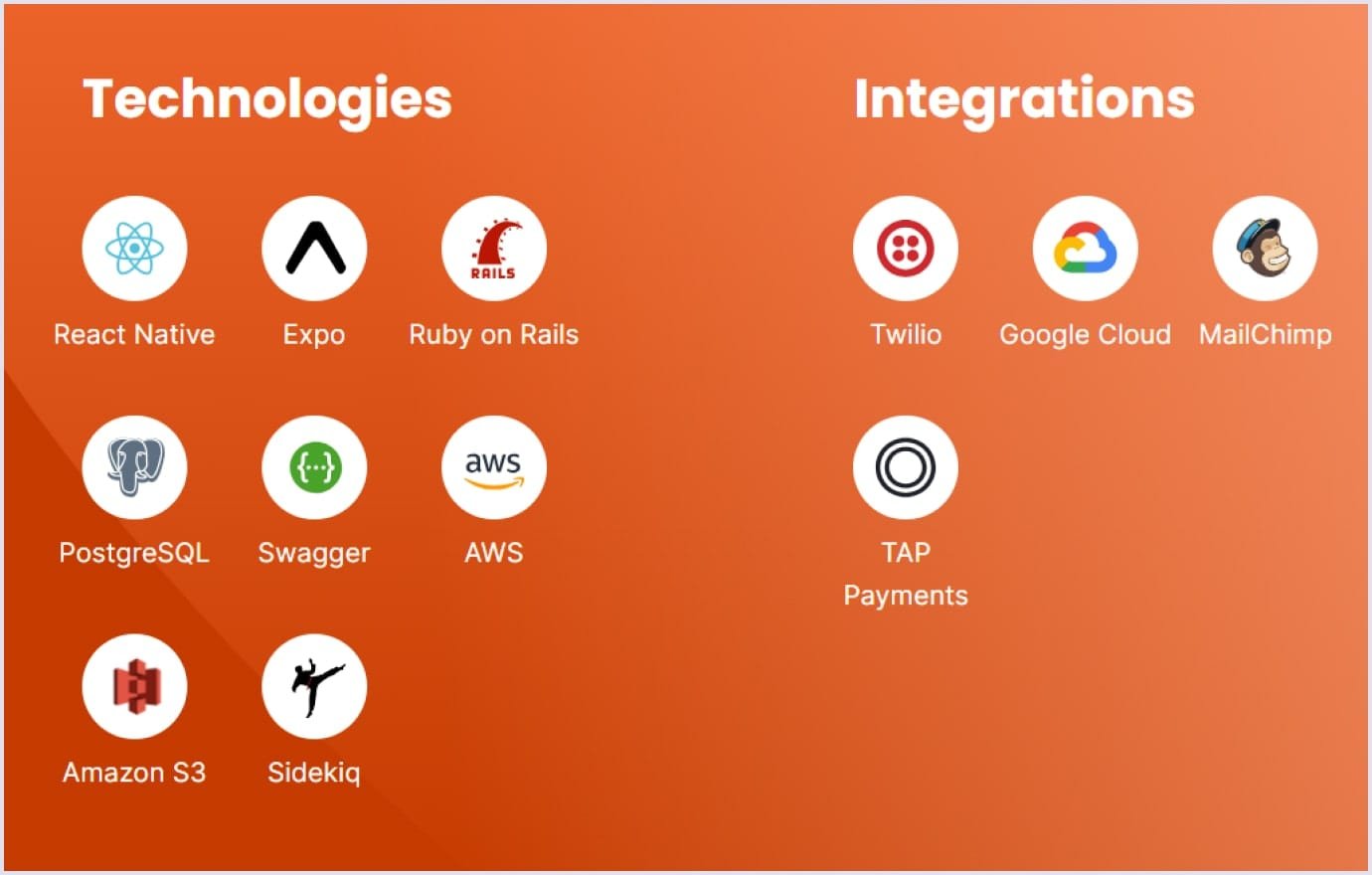
Codica’s development process
We developed the product from start to finish and made it ready for the market. So, what we’ve actually brought to the table? In short, we provided a well-thought-out booking logic for the app considering different use cases in the platform. Thus, the platform is easy to use, delightful, and secure for customers and hosts. These enhancements brought convenience to customers and peace of mind to hosts.
Step 1: Infrastructure and DevOps
Each project starts with the analysis of its requirements, which helps us adapt the infrastructure to your unique needs. These include the scope and the performance, security, and budget requirements. As a result, you get an optimized infrastructure for your solution that saves you costs. The following are exact technologies for the project setup that are important for making development processes budget-friendly:
Amazon Web Services (AWS) cloud infrastructure
We use it with a focus on Elastic Container Service (ECS) for deploying a project with up to 99.9% of solution uptime. Thus, your project is launched in a safe and cost-effective environment ready for scaling.
Terraform infrastructure-as-code
We use Terraform for the following reasons:
- It helps us create standardized infrastructure components fast;
- It provides exact documenting of infrastructure, which eases its scaling and support;
- Start via GitLab CI/CD to remove manual control.
Our DevOps services do not stop here and ensure correct processes at all stages of development, including GitLab CI/CD automation of integration, testing, and deployment, AWS ESC for project optimization, and AWS CloudWatch for monitoring of your solution after launch.
Step 2: Product design
As the Kashta app focuses on delivering results to hosts and customers, its primary design feature is a minimalist layout. We concentrate on making it straightforward so that customers and hosts can easily reach their goals with UI/UX design.
As the app is cross-platform, we designed it to support both platforms, as they each have unique rules and parameters for mobile devices. The image below presents a comparison of the two options.
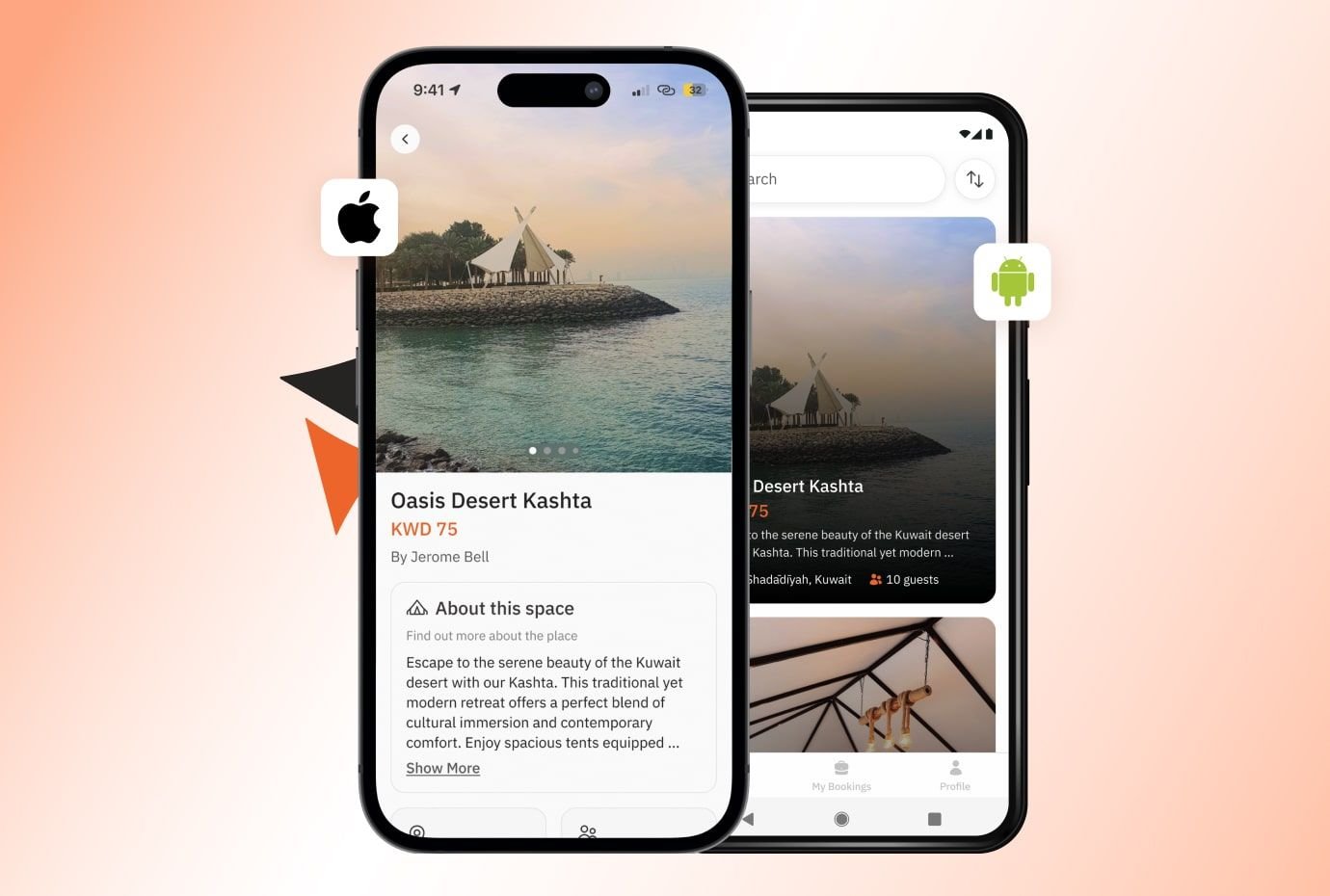
The Kashta app is developed in both Arabic and English, and the primary purpose of the design was to make it visually appealing in both right-to-left and left-to-right writing directions. In RTL writing, all elements are positioned on the right-hand side, and we made sure in the design that they align properly for this writing mode in both versions.
As the client emphasized the necessity of a minimalist style, the challenge was to adhere to this requirement yet make the app enjoyable. The app should be clear without overloading pages, while simultaneously highlighting the brand's style and maintaining engagement.
Thus, our design team decided to place an emphasis on distinct elements, including icons, graphic elements such as buttons, and other small UI components.
As for color styles, we chose three main colors and followed the same minimalist approach as with elements in UX:
- Rocky Black adds strong style and clarity;
- Orange provides vibrance that helps highlight important elements and keep users engaged;
- White is classic and provides the background that does not interfere with other colors and helps highlight the text.
Below is an image highlighting all three colors for the Kashta app.
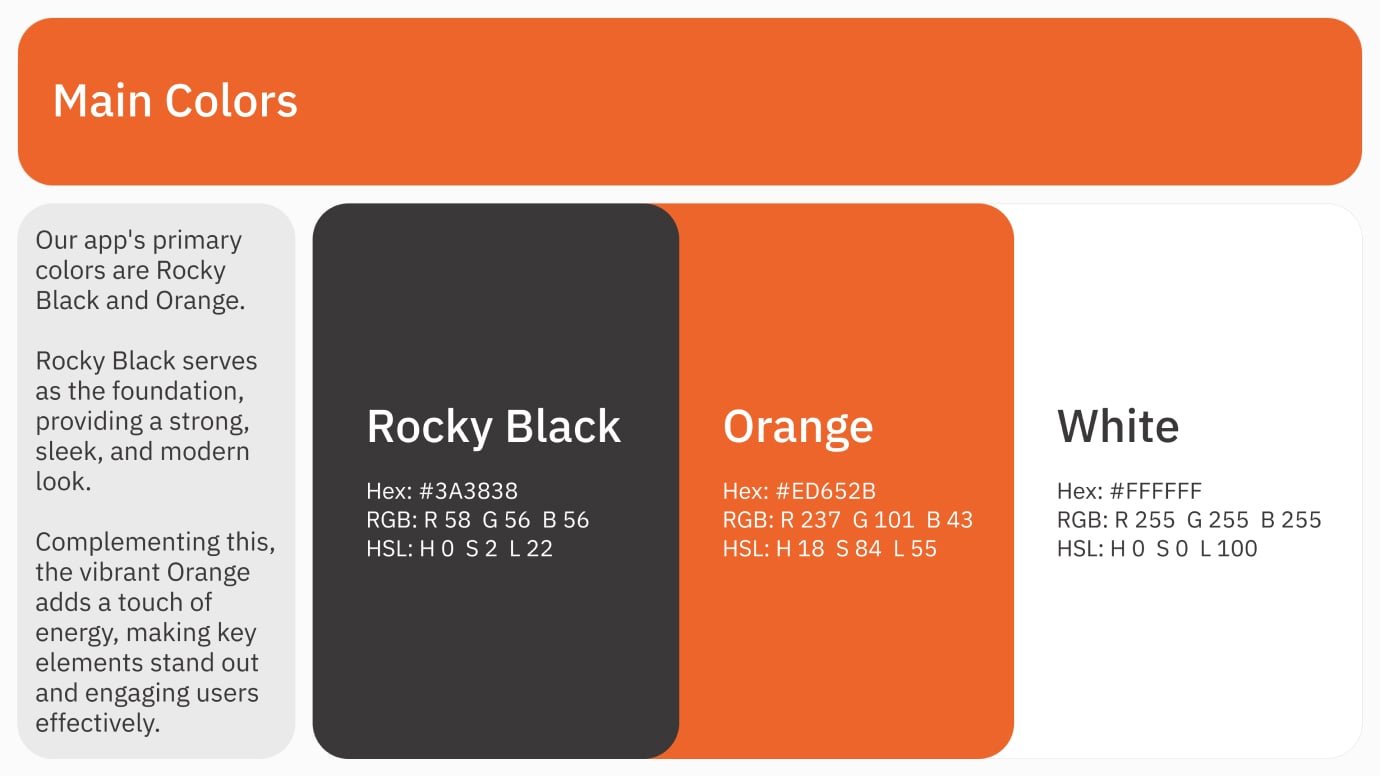
Our UI/UX design services are aimed at making the Kashta app not only delightful but also functional. That’s why UI design supports the way UX helps users navigate through the app.
Step 3: MVP development
In our MVP development services, we use an agile method. Working in sprints, we ensure that changes and adjustments are made as soon as possible and as needed. We optimized our development processes, and the project was completed on time and on budget.
In our practice of mobile app development agile is a crucial method. Thanks to daily meetings and weekly sprints, we managed to organize the process and streamline development in the most effective way. Prompt communication with the client and between members helped us to deliver and enhance the project fast.
The MVP development took two phases. In Phase 1 lasting for 3 months, we developed the must-have features, and in Phase 2 lasting for 2 more months, we included feature refinements and expansion. The must-have features included:
- Sign-in/sign-up with JWT authentication, which is a powerful and secure tool for data transmission;
- Listing creation presenting different types of spots;
- Search with map integration;
- Multilingual support of Arabic and English;
- Payment system for local needs.
Step 4: Testing and quality assurance
When it comes to ensuring quality, we apply our expertise to make sure no bug makes its way to production. Besides testing while developing, we perform testing of a solution before deploying it. Regarding quality assurance services for Kashta, we identified several technical requirements that needed to be tested. Thus, we made sure that the app is:
- Performant and can stand many users simultaneously;
- Usable, meaning customers and hosts enjoy using the app and easily reach their goals;
- Secure, which is non-negotiable considering the app is intended to process numerous transactions safely despite high loads.
As the app is developed for iOS and Android, we performed relevant tests:
- The app’s work on mobile devices;
- Installation and removal of the app;
- Start, starting screen, and initial flow;
- The app’s response to screens and screen orientation;
- Correctness of popups, push notifications, and hovering;
- Usability in terms of contrast, ease and accessibility of navigation.
Step 5: Maintenance and support
In our practice, after a solution has been deployed, we continue to monitor and support it, as required by your needs. Thus, we provide continuous monitoring, fixes, and updates to ensure the best user experience. As your users need new features and security, we ensure it with robust tools, such as AWS. Also, we make necessary patches and updates as needed so your solution is not only robust but also appeals to your customers.
How to build your own solution with Codica
We do not just build solutions. Each project is unique for us, and we approach it individually. Our team has successfully delivered platforms for various operating systems over the past 10 years, completing over 100 projects.
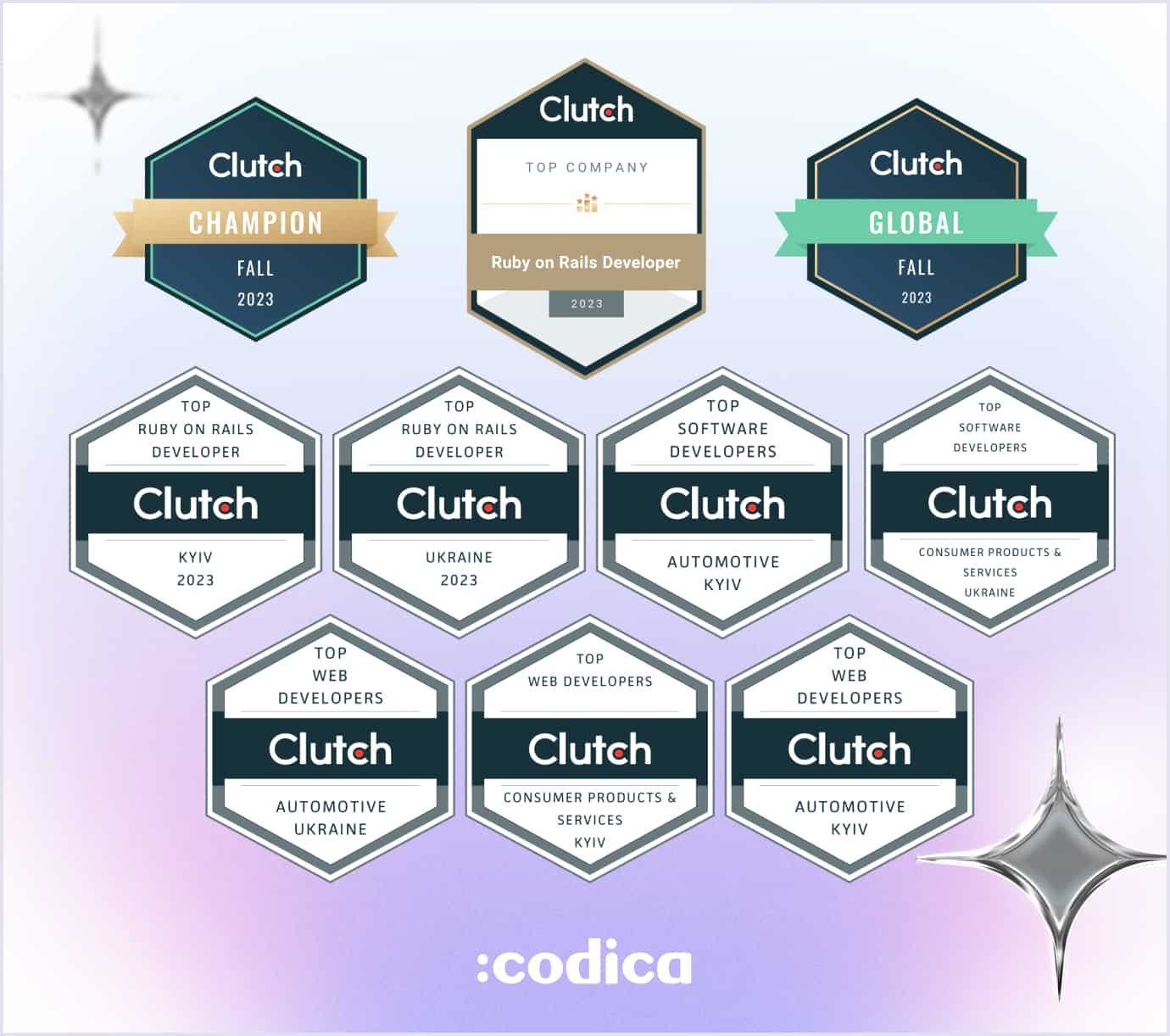
Opting for development with Codica means:
- Qualified specialists, including designers, developers, DevOps, and QA engineers;
- Prompt and transparent communication;
- Focus on proven results;
- Reliable partnership;
- Continuous improvement.
We’re looking forward to building an innovative product with you.
To wrap up
The Kashta mobile app brings hosts and customers together through in-app messaging, real-time availability sync, booking and cancellation logic, and many more helpful features. Thanks to the joint effort of our team members, the client got an optimized, robust, secure, and appealing solution.
We are happy to work on this project as it not only challenged us, but also brought us an opportunity to contribute to a project that makes it easy to book spots to spend time with family and close ones.
Check out our portfolio for more successful projects. If you want to build a mobile app with a native experience, contact us. We are eager to help you make your idea true.
